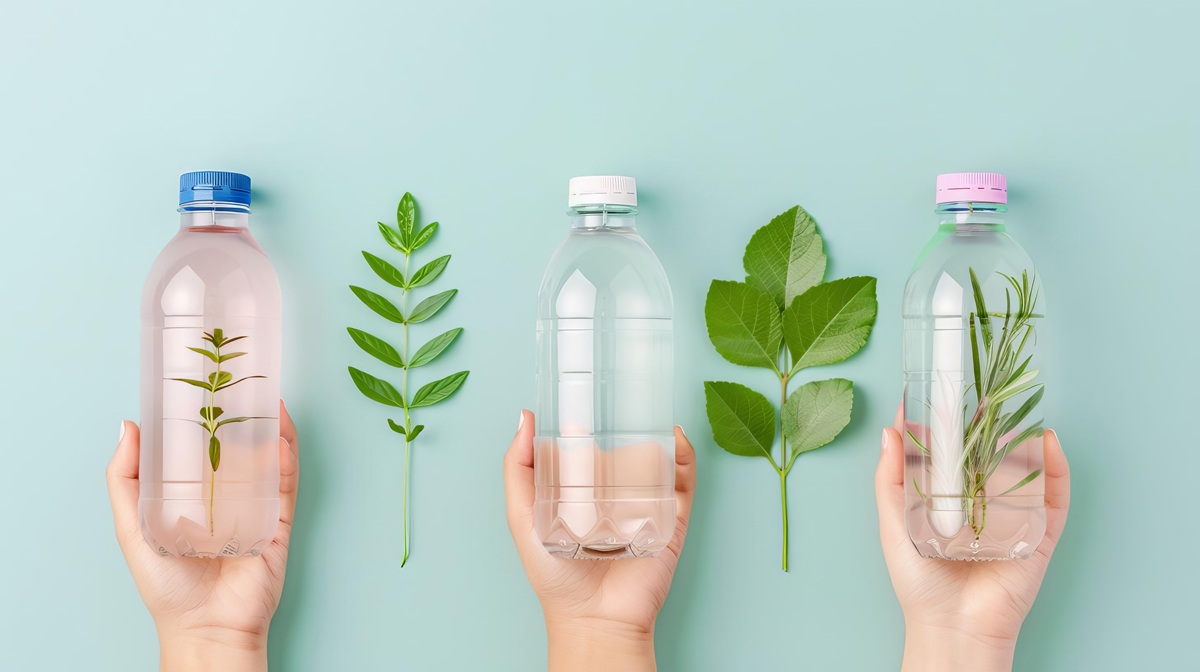
HighChem and Hokkaido University Establish Joint Lab for Mass Production of Plant-Based PET Bottles
Groundbreaking Joint Research with Hokkaido University, a Leader in Catalysis Research, and a Trading Company with Multiple Commercialization Achievements
 Keiichi Aoshima, Director of HighChem Tokyo Research Lab
Keiichi Aoshima, Director of HighChem Tokyo Research Lab
At the press conference, Keiichi Aoshima, Director of HighChem Tokyo Research Lab, explained the background of the establishment of the "HighChem Hokkaido University R&D Lab." Regarding the groundbreaking nature of the joint development, Director Aoshima emphasized, groundbreaking aspects of this joint development: "Research on creating polymers from biomass is being pursued both domestically and internationally, but the challenge has been that the entire process from raw material procurement to application development has not been connected in a coherent line. This collaboration between a trading company and a university aims to expedite the societal implementation of the products."
In advancing research towards societal implementation, HighChem presented examples of its achievements in implementing ethylene glycol, a key material for PET bottles, derived from non-petroleum sources, and its ongoing work since 2021 on PLA (polylactic acid) fiber production. Additionally, they highlighted that Hokkaido University is one of the few organizations in Japan with top-tier catalytic research capabilities. Due to Hokkaido's natural resources, the university is actively advancing research in biomass utilization. Director Aoshima emphasized, "We aim to leverage HighChem’s commercialization achievements and the network we have cultivated to harness the catalytic expertise of Hokkaido University, the synergy of the catalyst research institute, and accelerate the commercialization of biomass-derived PET bottles and fibers."

"University-developed commercialization technologies in the field of catalysis are truly rare. We hope that Professor Nakajima's groundbreaking development of biomass-based PET bottle raw materials may become a significant breakthrough from Hokkaido University."

"We are delighted to partner with Hokkaido University, which has a long history in catalysis research. Being involved in both academia and industry, we are eager to collaborate on the societal implementation of technologies that will help achieve global carbon neutrality."
"On HighChem’s Achievements in Environmental Technology Commercialization and Dissemination"
The Key to Success Lies in Procuring Competitive Raw Materials and Market Development

In his presentation, Yuichi Takahashi, Director of HighChem, shared the company’s achievements in the commercialization and dissemination of environmental technologies.
In the presentation, HighChem discussed its achievements in the promotion of technology for producing ethylene glycol from non-petroleum sources. "Ethylene glycol, used as a raw material for PET bottles, was traditionally produced using the ethylene method, which involved cracking naphtha. However, HighChem developed a technology based on UBE Corporation's method, known as the SEG® method," said the company. HighChem has implemented licenses for this technology at a capacity of 10 million tons per year, with commercial operations currently underway in China at 6 million tons per year. "Our technology provides cost advantages compared to the ethylene method," they added.
Regarding the development of technology for producing fibers from CO2, HighChem stated, "We have set an ambitious vision to become a company capable of producing polyester on a commercial scale by 2030. As part of this, we are engaged in the development of technologies to produce paraxylene from CO2 as a NEDO project, as well as the development of technologies to produce ethylene glycol from CO2, with commercialization efforts already underway."
Furthermore, regarding efforts towards societal implementation, HighChem emphasized, "It is necessary to capture actual market needs and procure competitive raw materials while developing new markets." They also expressed their intention to "work alongside Hokkaido University to ensure the societal implementation of their remarkable research achievements."
Hokkaido: A New Player in Industry!
Developing Technology for Sustainable Chemical Feedstocks from Biomass
 Professor Kiyotaka Nakajima, Hokkaido University, Catalysis Science Research Institute
Professor Kiyotaka Nakajima, Hokkaido University, Catalysis Science Research Institute
Professor Kiyotaka Nakajima gave a presentation titled "Technology Development for Creating Petrochemical Products from Plant Resources." Regarding conventional chemicals, he explained, "The process of creating chemicals from petroleum has developed around petrochemicals, but this has led to increased CO2 emissions and the depletion of oil resources." He continued, "By replacing petroleum with biomass as the raw material, CO2 emitted during disposal can be concentrated by plants and utilized as a feedstock for chemicals, leading to the creation of a new circular society."
He also highlighted "PEF (polyethylene furanoate)" as a promising resin alternative to petroleum-based PET bottles, noting that "PEF has a gas barrier property that is ten times higher than that of PET bottles, and it is a groundbreaking resin that can be applied to various uses, including fibers." He also pointed out that approximately 80 million tons of PET bottles are produced annually and emphasized that "To replace this quantity of PET bottles, it is crucial to first produce glucose from non-food biomass, then create PEF from that feedstock and implement it socially. We aim to achieve this through collaboration between HighChem and Hokkaido University."
Furthermore, regarding the contribution of this research to Hokkaido, he stated, "Unlike the petrochemical era, if biomass chemicals become mainstream, agricultural regions like Hokkaido have the potential to develop as new industrial players." He added, "This is one of the major visions of this research."




